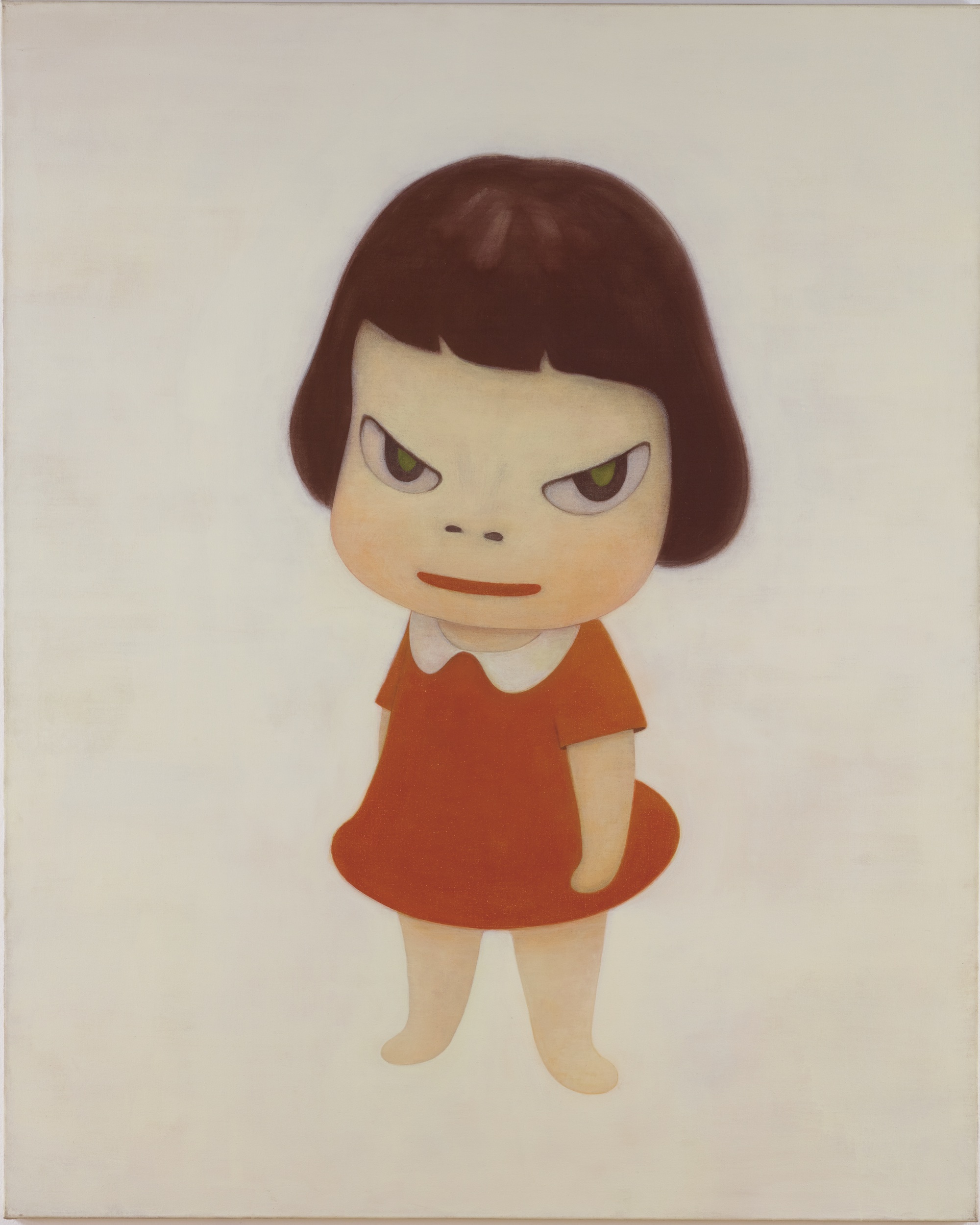BILBAO, Spain — An exhibition of the work of Yoshitomo Nara at the Museum Guggenheim Bilbao opens with the installation “My Drawing Room 2008, Bedroom Included” (2008). The hut-like structure is filled with memorabilia and toys, and its exterior is decorated with a painting of a small girl, featuring colorful block letters spelling out “PLACE LIKE HOME.” The work conveys the Hirosaki-born artist’s homesickness for Japan while he studied art in Düsseldorf in the 1990s. Indeed, the survey, organized by Nara based on themes rather than chronology, revolves around the notion of displacement, some of it cultural (Nara didn’t speak German, though he later worked in Cologne), much of it the broader angst and rebellion of adolescence. The latter casts Nara’s idea of “home” as a web of fantasies, but also of dark, irrepressible urges — a psychosomatic space where, paradoxically, one never truly feels at home.
The exhibition progresses from the relatively innocent sardonic humor of Nara’s drawings, such as an undated work depicting an absurdly elongated black boot squashing a flower, to the uncanny malice of paintings such as “Dead Flower 2020 Remastered” (2020), in which a girl holding a saw, her back to us, shows off a toothy smile, her mouth inexplicably dripping blood. The image is violent and absurd — the yellow glow of a light bulb, upper left, connotes a domestic setting; the severed flower, bottom center, reassures us that nothing serious has happened, but the impression of the child’s menacing glee and her serrated teeth cannot quite be softened.

I couldn’t help noting Nara’s affinity with the American artists Mike Kelley and Paul McCarthy in his depictions of oddly aged children with quasi-animalistic snouts and giant cartoonish eyes. Kelley’s disfigured, haphazardly reassembled ragdolls, in particular, have a similar sentimental yet nightmarish quality. Nara grew up during Japan’s economic miracle; his parents worked long hours, leaving him in long periods of isolation. That adolescence, the later stagnation of the economy, as well as the shadow of the atomic bomb — reawakened by the Fukushima disaster in 2011 — underpin Nara’s oeuvre, the way that the unraveling of the American dream did Kelley’s.
Indeed, at the beginning of this century, Nara’s work evolved. Gone are the illicit joys of smoking, cursing, destructiveness, or self-harm and references to icky bodily functions that mark his earlier work. The children’s poses become drawn in and vulnerable. The child in “Urgence” (2013), for instance, gazes up accusingly from a hospital gurney; the girls in “After the Acid Rain” and “No Means No” (both 2006) hunker, their smiles collapsed into zip-lines.
Throughout his body of work, Nara consistently favors acrylic paint, clearly delineated edges, and simplified silhouettes, though he also experiments with reinforced fiber plastic (RFP), adding shimmer, and reducing the color palette to off-whites and beiges, particularly in his openly political works from between 2017 and 2020. These later works, such as “From the Bomb Shelter” (2017) and “Sweet Home Gate” (2019) show Nara experimenting with a more direct style resembling crude anti-war posters. Yet, here as before, Nara complicates homebound nostalgia. The modest, hut-like structure he depicts in “Home” (2017) is very similar to the one with which he opened the show — but this time, the image’s lack of color, in contrast to Nara’s previous vibrant palette, conveys an anxiety further freighted by the adjacent images of war shelters.

Yoshitomo Nara continues at Guggenheim Museum Bilbao (Abandoibarra Etorbidea, 2, Bilbao, Spain) through November 3. The exhibition was organized by Lucía Agirre.

